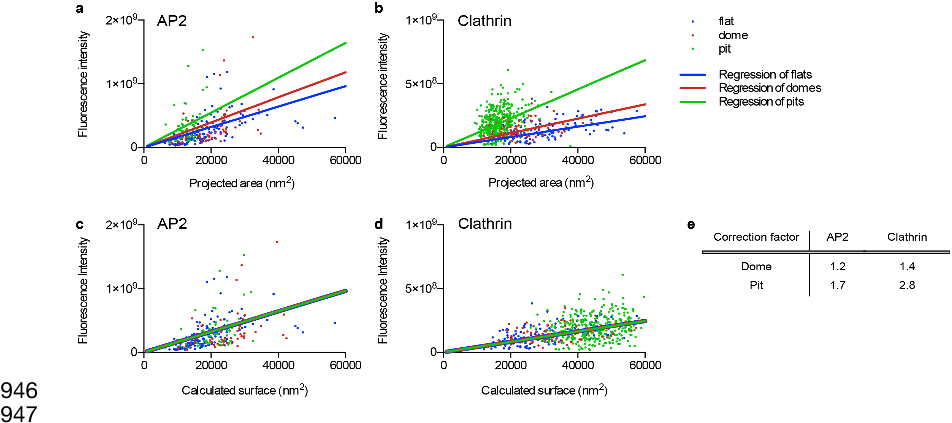9.$)&,('$ 0& .-48
! Clathrin-mediated! endocytosis! (CME)! is! an! essential! uptake! pathway! that!49
relocates!membrane!or!extracellular!cargo!into!the!cell!to!regulate!multiple!cellular!50
functions!and!cell!homeostasis
1
.!During!CME,!the!clathrin!coat!is!assembled!to!form!51
a! clathrin-coated! pit! (CCP)! that! after! dynamin-mediated! scission! from! the! plasma!52
membrane! (PM)! leads! to! the! formation! of! a! clathrin-coated! vesicle! (CCV)
2
.! This!53
process! is! coordinated! by! numerous! adaptor! and! accessory! proteins
1,3
.! Electron!54
microscopy! (EM)! of! clathrin! coated! structures! (CCS)! has! shown! the! architectural!55
complexity! of! the! clathrin! meshwork! organized! into! hexagons! and! pentagons
4,5
.!56
From!this!EM!analysis,!it!was!proposed!that!a !CCV!initiates!as!a!flat!clathrin!lattice!57
that!is!then!rearranged!to!form!a!curved!CCP
4,6,7
.!However,!for!topological!reasons!58
this! requires! a! major! ultrastructural! rearrangement! of! the! clathrin! lattice! which!59
appeared!to!be!dynamically!difficult!and!energetically!costly
8–12
.!For!these!reasons,!60
this!notion!was!replaced!by!a!general!belief! that!CCS!grow!with!a!constant!curvature!61
(constant!curvature!model,!Fig.1a)
8,9,13
!and!that!flat!CCS!are!distinct!from!CCPs!and!62
serve!different!purposes
14–16
.!This!model!was!supported!by!the!finding!that!purified!63
clathrin! triskelia! self-assemble! into! curved! clathrin! baskets! in# vitro
17,18
.! Recently,!64
correlative! light! and! electron! microscopy! (CLEM)! analyses! provided! experimental!65
evidence! that! CCS! first! grow! flat! to! their! final! size! and! then ! acquire! curvature!66
(constant!area!model,!Fig.1a)
19
.!However,!this!study!did!not!measure!the!dynamics!67
of! CCP! formation! directly,! and! it! did! not! identify! the! cellular! factors! that! might!68
determine! when! the! flat-to-curved! transition! occurs.! Thus! a! comprehensive!69
understanding! of! t he! dynamic! process! of! coat! rearrangement,! of! the! temporal!70
aspects! of! flat-to-curved! transition! and! of! what! governs! this! ultrastructural!71
rearrangement!during!CME!is!still!missing.!!72
In! this! work,! we! combine! mathematical! modelling! of! individual! endocytic!73
event!dynamics!a nd! CLEM! analysis! to!provide!a! comprehensive! description! of!the!74
dynamic! ultrastructural! rearrangement! of! the! clathrin! coat! during! CME.! We!75
demonstrate! that ! CCPs! indeed! initially! grow! as! flat! arrays,! but! that! their!76
reorganisation! into! curved! structures! occurs! before! reaching! their! full! clathrin!77
certified by peer review) is the author/funder. All rights reserved. No reuse allowed without permission.

















